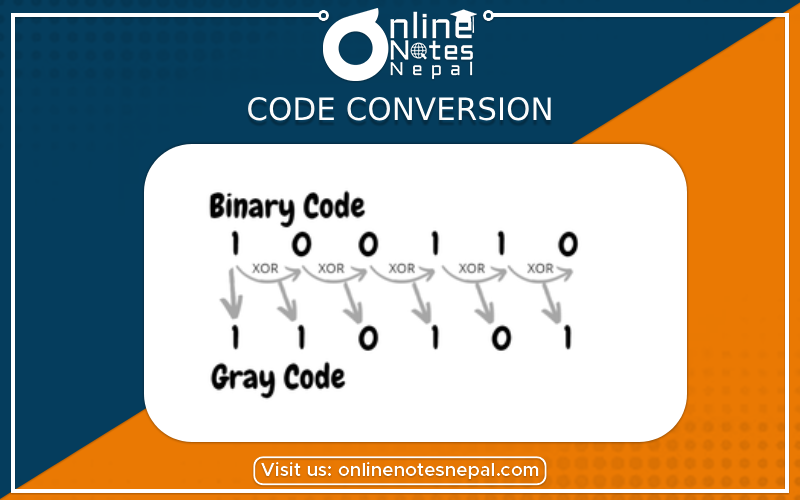Published by: Dikshya
Published date: 11 Jul 2023

Code conversion refers to the process of converting data from one representation or encoding scheme to another. This conversion can be necessary for various reasons, such as compatibility between different systems, data compression, data storage optimization, or signal processing requirements.
There are several common types of code conversions in digital systems:
1. Binary to Decimal Conversion: This conversion involves converting binary (base-2) numbers to decimal (base-10) numbers. Each digit in the binary number is multiplied by the corresponding power of 2 and then summed to obtain the decimal equivalent.
2. Decimal to Binary Conversion: This conversion is the reverse of binary to decimal conversion. It involves converting decimal numbers to binary numbers. The decimal number is successively divided by 2, and the remainders at each step form the binary representation.
3. Binary to Gray Code Conversion: Gray code is a binary numeral system in which adjacent numbers differ by only one bit. This conversion is used in applications where it is important to minimize errors when transitioning between adjacent values. It is commonly used in analog-to-digital and digital-to-analog converters.
4. Gray Code to Binary Conversion: This conversion involves converting Gray code back to the equivalent binary representation. The conversion process typically uses a combination of exclusive OR (XOR) operations to determine the corresponding binary digits.
5. Analog to Digital Conversion: This conversion is used to convert continuous analog signals into discrete digital representations. It involves sampling the analog signal at regular intervals and quantizing the sampled values to obtain a digital representation.
6. Digital to Analog Conversion: This conversion is the reverse of analog to digital conversion. It involves reconstructing continuous analog signals from discrete digital representations. Various techniques such as pulse width modulation (PWM) or digital-to-analog converters (DACs) are used for this purpose.
These are just a few examples of code conversions in digital systems. There are many other types of conversions depending on the specific requirements and applications.
Here are a few examples of code conversions in digital systems:
1. ASCII to Binary Conversion: ASCII (American Standard Code for Information Interchange) is a widely used character encoding scheme. Converting ASCII characters to binary involves representing each character as a unique sequence of binary digits. For example, the ASCII code for the letter 'A' is 65, which is equivalent to the binary representation 01000001.
2. Hexadecimal to Binary Conversion: Hexadecimal (or hex) is a base-16 numbering system commonly used in computer programming. Converting a hexadecimal number to binary involves replacing each digit with its corresponding 4-bit binary representation. For example, the hex number "1F" is equivalent to the binary representation 00011111.
3. Binary to BCD Conversion: BCD (Binary-Coded Decimal) is a binary representation of decimal numbers. Converting binary to BCD involves grouping the binary digits into groups of four and representing each group with its equivalent decimal digit. For example, the binary number 1101 can be converted to BCD as 13.
4. BCD to Excess-3 Code Conversion: Excess-3 code is a self-complementing BCD code where each BCD digit is incremented by 3. Converting BCD to Excess-3 code involves adding 3 to each BCD digit. For example, the BCD number 0100 can be converted to Excess-3 code as 1011.
5. Gray Code to Binary Conversion: Gray code is a binary numeral system where adjacent numbers differ by only one bit. Converting Gray code to binary involves using a combination of exclusive OR (XOR) operations. For example, the Gray code 1011 can be converted to binary as 1100.